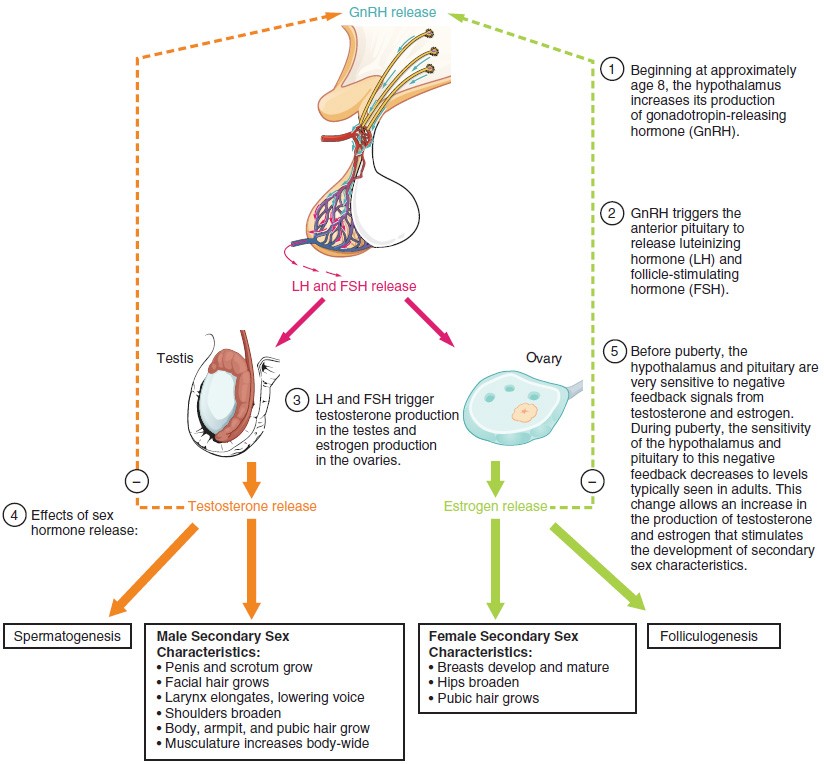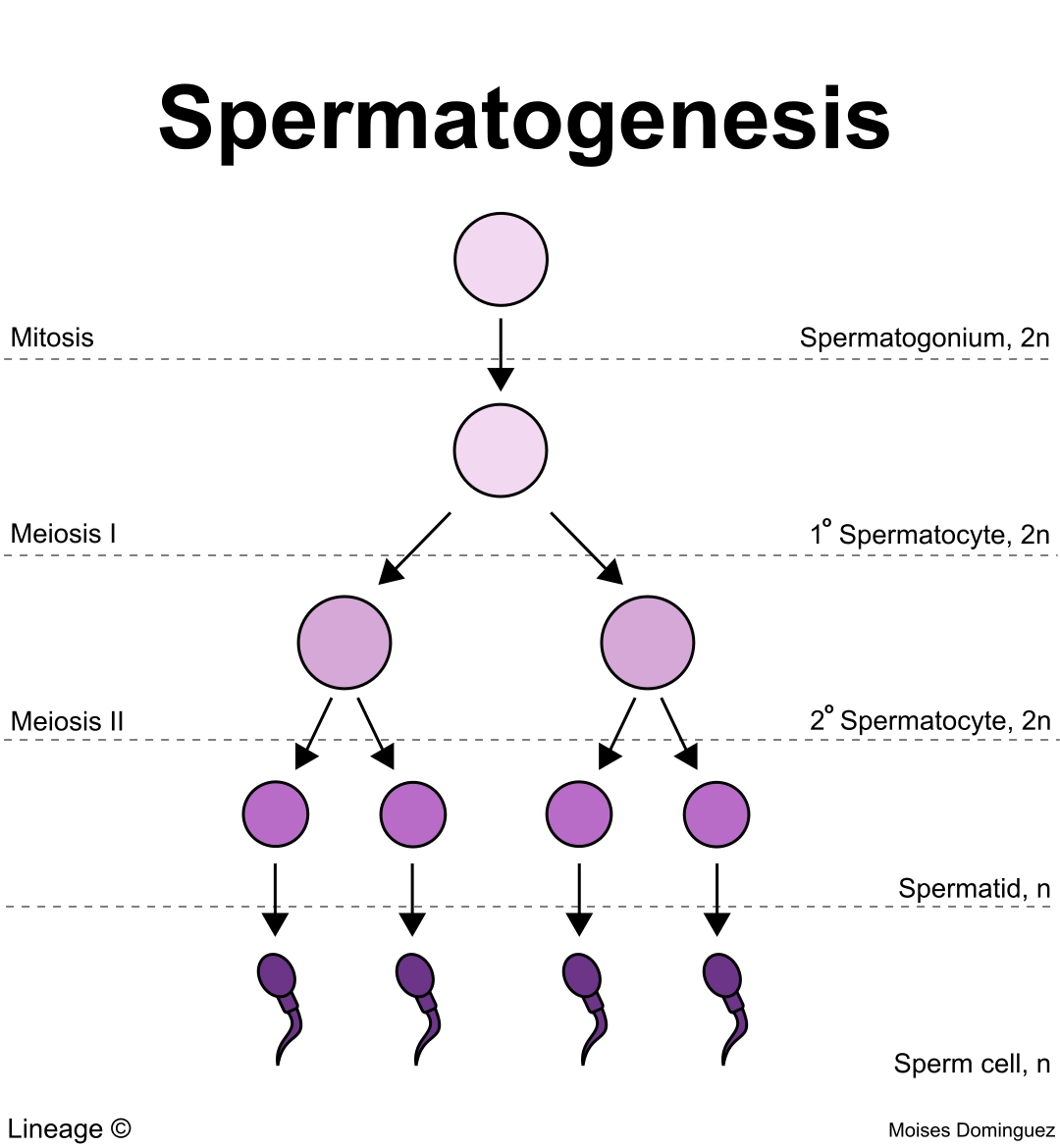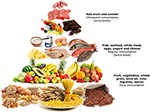Male Reproductive Development Study Guide
Introduction
Shortly after conception, the reproductive system of the embryo begins to mature. SRY, a male Y chromosome gene, is essential in initiating a series of processes that stimulate testis growth while repressing female structure development.
The hormone testosterone supports the advancement of male sexual organs and is produced by Leydig cells in the embryonic testis. If testosterone is not present, female sexual organs will develop.
While the gonads and other reproductive organs may be present in both males and females, the tissue that forms the internal reproductive structures comprises ducts that will only grow into male (Wolffian) or female (Müllerian) structures.
The Male Reproductive System
The reproductive system in males is a collection of organs that comprise a male’s reproductive and urinary systems. Within your body, these organs carry out the following tasks:
- Sperm production, maintenance, and transportation
- They expel sperm into the female reproductive system
- They are responsible for producing and secretion of sex hormones in men
Sexual Development Occurs at Puberty
Puberty is the period of development when a person becomes sexually mature. Though the systems look and function differently, the process of development is relatively similar. Additionally, the sequence of changes that occur for male and female teenagers is predictable.
A coordinated release of hormones from the hypothalamus (GnRH), the anterior pituitary (LH and FSH), and the gonads (either testosterone or estrogen), as shown in the image below, is responsible for the maturation of the reproductive systems and the development of secondary sex characteristics, which are mainly physical changes that play supportive roles in reproduction.
- The earliest signs of change appear at the age of eight or nine when LH production becomes apparent.
- The release of LH happens predominantly at night during sleep and occurs several years before the physical changes of puberty.
- Two changes in sensitivity occur when a person approaches puberty.
- The first is a reduction in hypothalamic and pituitary sensitivity to negative feedback. It requires increasingly higher quantities of sex steroid hormones to cease the production of LH and FSH.
- The second shift in sensitivity is an increase in sensitivity of the gonads to FSH and LH signals, implying that adults are more receptive to gonadotropins than children.
- As a result of these two modifications, the levels of LH and FSH gradually rise, causing the gonads to grow and mature, resulting in the release of increased amounts of sex hormones and the commencement of spermatogenesis and folliculogenesis.
Affecting Factors on Reproductive Development
In addition to age, various other factors including genetics, environment, and psychological stress, can influence the age at which puberty begins. Nutrition may be one of the more important influencesHistorical data show the effect of better and more consistent nutrition on the onset of menstruation in the United States, which decreased from an average age of approximately 17 years in 1860 to the current age of approximately 12.75 years in 1960, where it remains today.
Some studies suggest a relationship between the beginning of puberty and the quantity of stored fat in an individual. This impact is stronger in females, but it has been observed in both sexes. Body fat, which corresponds to adipose cell release of the hormone leptin, appears to predict menstruation. This may be due to the high metabolic demands of pregnancy and nursing.
Conclusion:
- Puberty is the period during which the reproductive systems continue to develop.
- The start of puberty is induced by a decrease in hypothalamic and pituitary gland sensitivity to negative feedback and an increase in gonad sensitivity to FSH and LH stimulation.
- These changes result in an increase in either estrogen or testosterone in both female and male youths. An increase in sex steroid hormones causes the maturation of the gonads and other reproductive organs.
- Males begin spermatogenesis, while females begin ovulating and menstruating.
FAQs :
1. How does the reproductive system of men develop?
Testosterone produced by Leydig cells in the embryonic testis stimulates the advancement of male sexual organs.
2. What are some of the male reproductive changes with age?
- The testes continue to produce sperm, but the rate of sperm cell production slows.
- Slowed urination and ejaculation.
- Sexual responses may become slower and less intense.
3. What are the 4 male reproductive disorders?
- Testicular Cancer
- Phimosis (Foreskin Problems)
- Male Infertility
- Vasectomy
4. What is the male reproductive structure?
The reproductive system of men is mostly located outside of the body. These external organs include the scrotum, penis, and testicles, and internal organs include the vas deferens, prostate, and urethra.
5. What stimulates the production of testosterone?
Luteinizing hormone (LH) stimulates testosterone production.
6. What is the male reproductive function?
- To produce, maintain, and transport sperm (the sperm cells from men) and protective fluid (semen)
- To discharge sperm within the female reproductive system during sex
- To produce and secrete sex hormones in men responsible for maintaining the reproductive system of men
7. Where is sperm stored?
Epididymis
8. What is the main organ of the reproductive system of men?
Testes. The testes are the primary male reproductive organs responsible for testosterone and sperm production.
We hope you enjoyed studying this lesson and learned something cool about Male Reproductive Development! Join our Discord community to get any questions you may have answered and to engage with other students just like you! Don’t forget to download our App to experience our fun, VR classrooms – we promise, it makes studying much more fun! 😎
Sources:
- Male Reproductive Developmenthttps://flexbooks.ck12.org/cbook/ck-12-biology-flexbook-2.0/section/13.59/primary/lesson/male-reproductive-development-bio/ Accessed on 1 Dec 2021.
- Male Reproductive System.https://kidshealth.org/en/parents/male-reproductive.html Accessed on 1 Dec 2021.
- Physiology, Male Reproductive Systemhttps://www.ncbi.nlm.nih.gov/books/NBK538429/ Accessed on 1 Dec 2021.
- Male Reproductive Systemhttps://my.clevelandclinic.org/health/articles/9117-male-reproductive-system Accessed on 1 Dec 2021.





